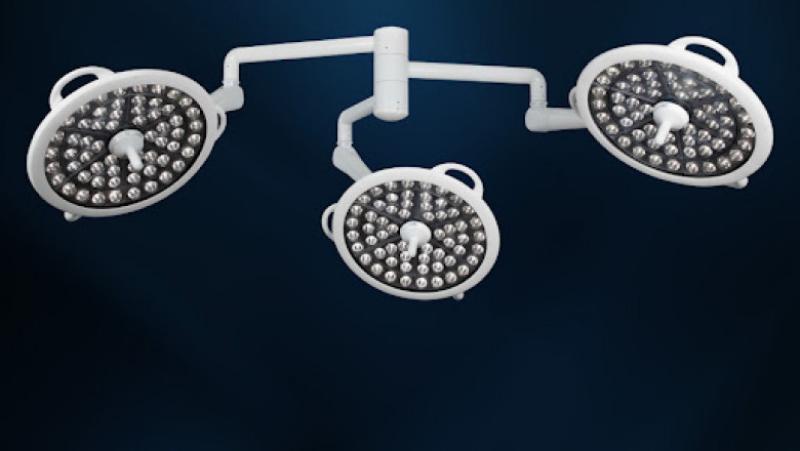In the rapidly evolving landscape of healthcare, the role of medical illumination systems has become increasingly paramount. These sophisticated lighting technologies provide optimal visibility, enhance surgical precision, and improve patient outcomes across various medical procedures. With continuous advancements in design and functionality, modern medical illumination systems are revolutionizing how healthcare professionals conduct examinations and surgeries, ensuring safety and efficiency.
Evolution and Technological Advancements in Medical Illumination Systems
Medical Illumination Systems have undergone significant transformation from simple incandescent bulbs to highly advanced LED and laser-based solutions. Early medical lighting was often constrained by inadequate brightness, heat emission, and lack of portability. Today’s illumination systems integrate cutting-edge technologies such as fiber optics, high-intensity LEDs, and adjustable color temperature controls to deliver superior lighting quality with minimal heat generation. These enhancements have made it possible to illuminate confined surgical spaces effectively while reducing eye strain for practitioners.
Moreover, innovations in light distribution and shadow reduction have enabled doctors to achieve consistent illumination regardless of the angle or position. The advent of portable and rechargeable lighting devices also contributes to enhanced flexibility in operating rooms and field medical applications. These advanced features facilitate complex surgeries and diagnostic procedures by providing unwavering light quality that adapts to the specific needs of different medical settings.
Impact of Medical Illumination on Surgical Accuracy and Patient Safety
Optimal lighting is crucial in ensuring surgical accuracy and minimizing risks during medical interventions. Medical illumination systems offer surgeons clear visualization of tissues, vascular structures, and anatomical details, which is essential for delicate procedures such as neurosurgery, cardiology, and orthopedics. Precision lighting allows for better differentiation of colors and textures, helping to avoid inadvertent damage to critical structures.
Additionally, improved illumination has a direct impact on reducing the likelihood of postoperative complications. Proper visualization enables accurate incisions and suturing, which contribute to faster patient recovery and lower infection rates. The design of many modern illumination systems also incorporates sterilizable materials and easy-to-clean surfaces, ensuring compliance with strict hospital hygiene protocols.
Key Features to Consider When Selecting Medical Illumination Systems
Choosing the ideal medical illumination system requires careful evaluation of factors such as light intensity, color rendering index (CRI), portability, and energy efficiency. High light intensity ensures that the surgical field is illuminated adequately without causing glare or shadows. CRI is equally important as it determines how accurately colors are rendered under artificial light, which is critical for distinguishing between different tissue types.
Flexibility and ease of maneuvering the light source allow healthcare professionals to adjust illumination quickly in response to dynamic surgical requirements. Systems equipped with adjustable color temperature enable operators to customize the light spectrum, enhancing contrast and visibility. Energy-efficient models, especially those utilizing LED technology, offer longer operational life and reduced environmental impact, making them ideal for continuous use in busy medical facilities.
Commercial Growth and Market Dynamics Driving Medical Illumination Innovation
The medical illumination systems market has experienced substantial growth driven by increasing demand for minimally invasive surgeries and advanced diagnostic procedures. Rising investments in healthcare infrastructure across emerging regions, along with expanding geriatric populations requiring more frequent medical interventions, are significant factors propelling market expansion.
Healthcare providers are increasingly adopting integrated illumination solutions bundled with imaging and surgical equipment to enhance procedural efficiency. Furthermore, ongoing research focuses on developing illumination systems with augmented reality (AR) compatibility and smart control features, promising to further upgrade surgical precision and outcomes.
Business stakeholders keen on analyzing comprehensive market trends, competitive landscape, and future projections can explore detailed reports curated by specialized market research platforms. These repositories offer in-depth insights into segment-wise performance, technological innovation trajectories, and regulatory frameworks influencing the sector.
Navigational Guide to Comprehensive Medical Illumination Research Insights
For industry professionals seeking extensive data and strategic intelligence on medical illumination system advances, accessing specialized research reports is invaluable. These detailed documents typically encompass market segmentation by product type, application areas, end-user adoption, and geographic distribution. They also provide analytical forecasts and assess the impact of emerging technologies on market dynamics.
Medical illumination systems continue to be a cornerstone of contemporary healthcare, ensuring optimal working conditions for medical professionals and safer experiences for patients. As technology evolves rapidly, staying informed through detailed market intelligence becomes essential for all stakeholders engaged in this critical segment of healthcare innovation.
Get This Report in Japanese Language -医療用照明システム市場
Get This Report in Korean Language -의료용 조명 시스템 시장
Read More Articles Related to this Industry –
Nanofiber Applications in Medical Devices: Revolutionizing Healthcare
Camera Modules in Medical Devices: Revolutionizing Diagnostics and Treatment
About Author:
Priya Pandey is a dynamic and passionate editor with over three years of expertise in content editing and proofreading. Holding a bachelor's degree in biotechnology, Priya has a knack for making the content engaging. Her diverse portfolio includes editing documents across different industries, including food and beverages, information and technology, healthcare, chemical and materials, etc. Priya's meticulous attention to detail and commitment to excellence make her an invaluable asset in the world of content creation and refinement.
(LinkedIn- https://www.linkedin.com/in/priya-pandey-8417a8173/)
